Original URL: https://www.theregister.com/2009/10/08/hands_on_sony_vaio_x/
Hands on the Sony Vaio X
We get our mitts on the World's lightest, most expensive... er... netbook
Posted in Personal Tech, 8th October 2009 14:22 GMT
First Look Sony's Vaio X is a skinny so and so, to a degree that puts even Apple's MacBook Air to shame. Likewise its weight. But is it too compact for a notebook?
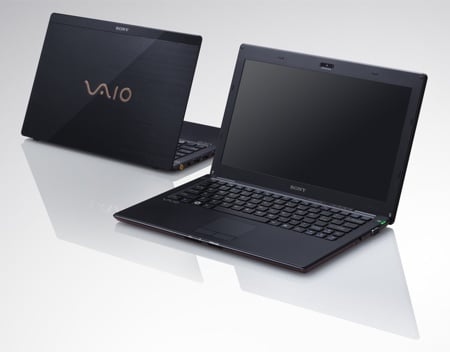
Sony's Vaio X: pricey for a notebook, very expensive for a netbook... which is what it is
Sony is pitching the machine at business travellers, and since the entry level X will be priced at around £1300 few others are likely to be able to afford one. Even if they can, there's the fact that you can buy three 11in netbooks for the same price as the X, which also has an 11in screen, albeit one in a rather more bendy lid than most other machines of its ilk possess.
Intel may have relaxed its rules about the screen sizes Atom processors can be coupled with, but Sony has still kitted the X out with Z-series Atoms, chips designed for handheld terminals. We didn't have a chance to benchmark the 2GHz X today, but we can say it scores a mere 2.5 for its Windows 7 Experience rating.
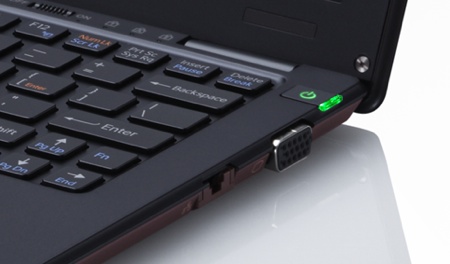
Ethernet included. Beat that, Air fans
Whether the machine's CPU or its integrated GMA 500 graphics core is the weakest link that drags the overall WE score down, we can't say. It won't be the SSD, which felt reasonably nippy in use.
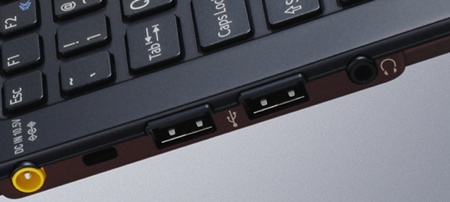
Only two USB ports, and a headphone socket - no input, alas
Drive, chips and motherboard are incredibly compact, the entire front half of the machine's lower section being taken up with the battery that, Sony claims, delivers up to eight hours' runtime. Maybe, but with screen brightness on max and Wi-Fi connected to a basestation, Windows reported just under five hours' usage from a 100 per cent charged battery.
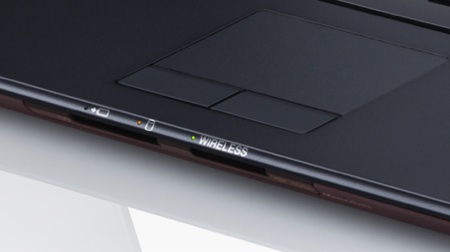
A decent touchpad
Above the battery, at the front of the X are the SD and Memory Stick slots. Sony has also kitted it out with two USB ports, 3.5mm audio, an Ethernet connector with a fold-down panel that expands it to the correct size, and a VGA port. The latter looks out of place, the way DVI ports did when they first appeared on notebooks.
Open the machine and you can push the screen back past the point at which its lower edge will lift up the back of the computer. No problem - just flip down to the two fold-away legs Sony has included. It hasn't done so for ergonomic reasons. No, the legs are needed to stop the X tilting backwards when the regular, four-cell battery is removed and replaced with the eight-cell extended-run optional model.
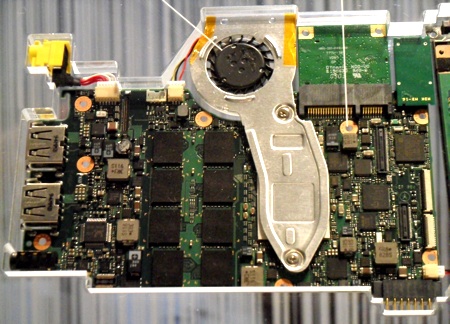
Inside, some compact motherboard design
Like other netbooks - which is what, really, the X series is - the new Sony has no optical drive. It does have a decent (lozenge-style) keyboard, which a lot of netbooks lack, and a carbon-fibre shell. If nothing else, the X looks the part, coming across as a serious, business-oriented machine and not a cheap toy for the kids. Well, apart from the 'exclusive' gold-painted version that is...
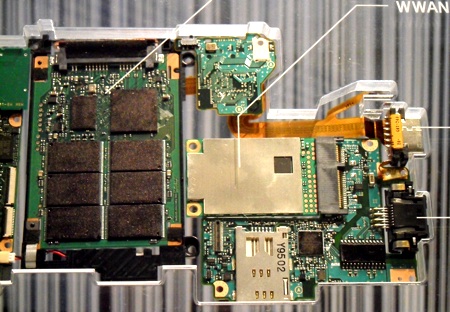
Even the SSD is pared down
How productive the businessman or woman will be is another matter. The 11in screen has a 1366 x 768 display, and a bright, glossy sharp-as-a-knife job it is too. But it's hard to imagine someone enjoying staring at it all day. So this is businessperson as in executive who needs to look up a webpage or data file occasionally, rather than worker who needs to get things done.
These folk will need the larger screens of the MacBook Air, Lenovo ThinkPad X300 or Toshiba Portégé R600 if they must also have a notebook that's very portable. All these machines are rather more powerful than the Sony too.
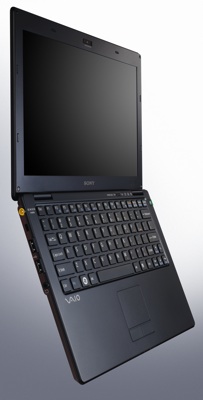
Thin is in. Light is might.
But not as mobile. Quite apart from its comfortable-to-carry around lightness and size, the X has built-in HSDPA 3G networking, so there's no reason not to be as connected as Captains of Industry want to be. And they can afford not to give a fig for the asking price. ®